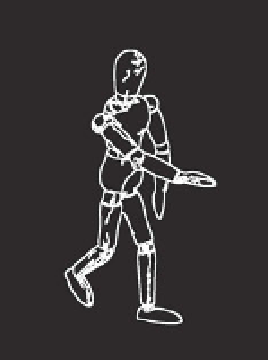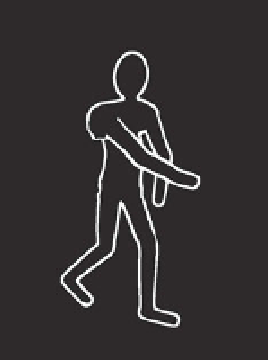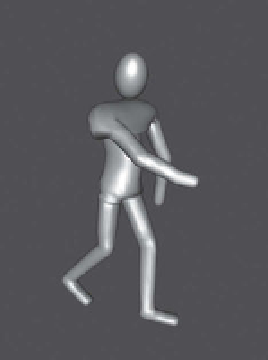Graphics Reference
In-Depth Information
where
λ
2
are weights and
D
s
and
D
e
are distance functions between binary sil-
houette images and edge maps, respectively. A natural choice for
D
s
is the
Hamming
distance
— that is, the number of pixels that have different labels in the two binary
images. A common variant called the
chamfer distance
, suggested in this context by
Gavrila and Davis [
164
], penalizes pixels in one image that are further from the sil-
houette in the other image more severely. We can also construct a weighted average
of the pixels seen in one silhouette but not the other [
449
]. Ren et al. [
388
] proposed
to learn an effective
D
s
based on a database of labeled poses; the distance function
was composed of computationally efficient rectangular binary filters. We could also
create
D
s
based on the correspondence between estimated matching points on the
silhouettes.
The edge distance function
D
e
can be defined similarly to
D
s
; for example, we
can count the number of edge pixels in
E
i
λ
1
,
[
119
]. We can
see from Figure
7.23
c that there are likely to be many edges in the real image not in
the model, but most of the model edges should appear in the image if the model is
correctly posed. The edge pixels can also be weighted by their gradient magnitude
and orientation as a measure of importance [
236
].
(
t
)
that are observed in
E
i
(
t
)
(a)
(b)
(c)
Figure 7.23.
Silhouettes and edge maps for observed images (top) are compared to predicted
silhouettes and edge maps corresponding to a candidate model position (bottom).







